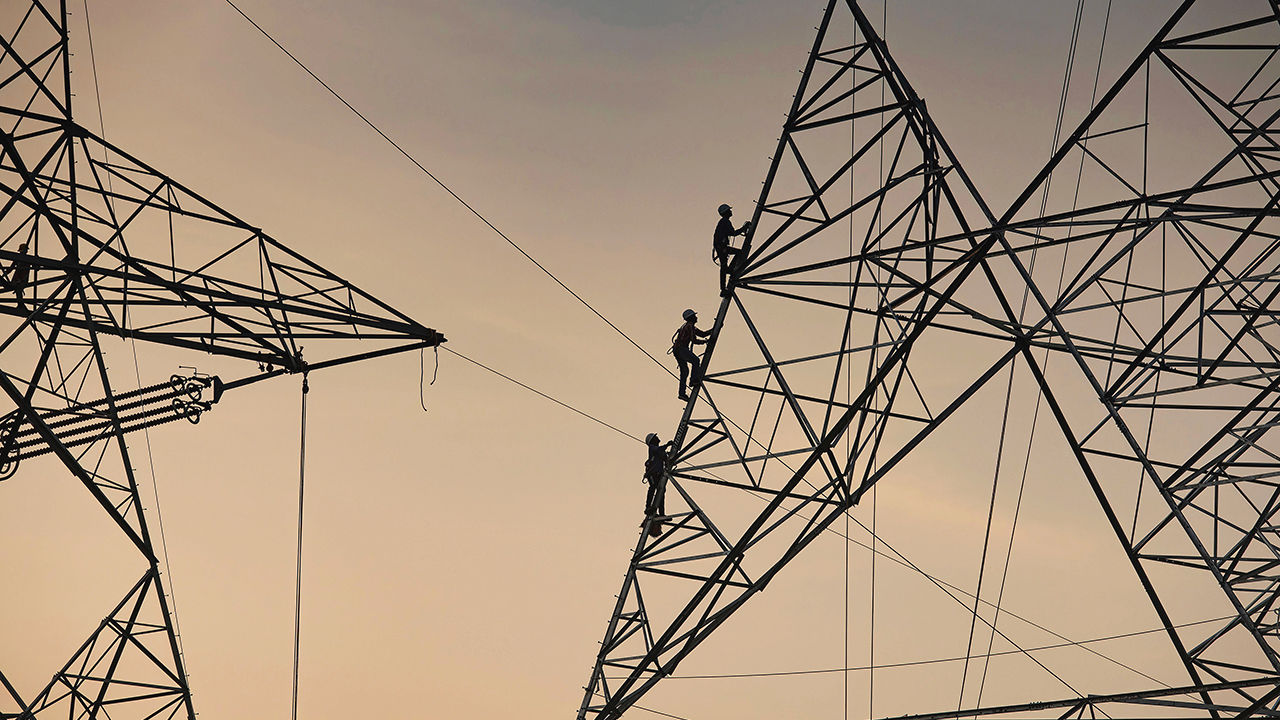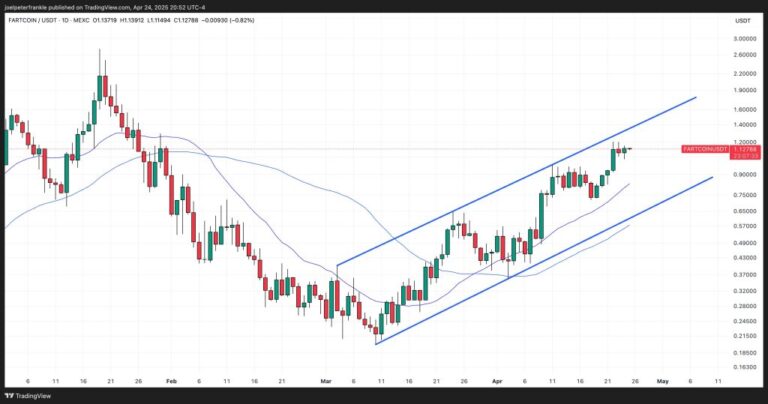
Your browser does not support the <audio> element.
THE RISE of artificial-intelligence (AI) data centres, with their insatiable hunger for electricity, is asking an awful lot of the world’s utilities and grid operators. On the bright side, AI can also give a fair bit back, by helping transform ancient, overloaded and dumb electricity networks into something fit for the digital and decarbonised age. America’s Department of Energy reckons that AI and other improvements to the country’s existing grid could liberate as much as 100 gigawatts (GW) in transmission and distribution capacity over the next three to five years without the need to build new lines. That is about 13% of current peak demand of around 740GW.
Some of these “grid-enhancing technologies” are now being rolled out, thanks to doughty startups developing them, their financial backers and utilities, which are becoming less resistant to innovation. GETs, as they are known for short in the industry, fall into two main categories: hardware upgrades to transmission grids and software upgrades to those grids’ brains.
Power cables have changed little in the past century. Most still consist of aluminium wrapped around a steel core. Grid Strategies, a consulting firm, reckons that replacing these materials with advanced conductors on just a quarter of America’s ageing transmission lines would enable the interconnection of an extra 27GW of zero-carbon power generation a year for the next decade. Because renewable energy is cheaper than dirtier kinds, that could save consumers at least $140bn over ten years. And because replacing old cables with new ones on existing lines avoids having to secure lots of permits, it can be done faster than erecting all-new pylons.
One promising substitute is carbon fibre. TS Conductor, a Californian startup, uses this material instead of steel in its cables’ core. The result is much stronger, four-fifths lighter and able to carry up to three times as much power. It also sags far less, which makes it less prone to short-circuits and fires. The company, which is backed by National Grid, a British utility, and Breakthrough Energy Ventures, a climate-tech fund started by Bill Gates, a tech billionaire, is installing its equipment in North Dakota and has a $100m joint venture for future projects. Another startup, NanoAL Lightning, has come up with an aluminium-alloy core that is also both more conductive and stronger than steel.
Another physical upgrade is to place big batteries at strategic choke-points along power lines. Last year Zenobe, a British firm, installed Europe’s largest such battery in north-west England. In September it received a $750m investment from KKR, a giant asset manager placing big bets on infrastructure.
Some systems involve two sets of grid-scale batteries. The first sits between big wind or solar farms and the grid. It is charged using renewable energy whenever the sun is shining and the wind blowing, and discharges when the grid is not congested. The second set resides between the grid and places that demand high loads, such as AI data centres. It absorbs the green energy during those uncongested periods, and discharges the power locally at peak demand.
Fluence, a pioneering energy-storage firm jointly controlled by Siemens, a German industrial giant, and AES, an American utility, is using this two-step approach to deploy 200 megawatts (MW) in sections of Germany’s grid. Hydrostor, a Canadian startup backed by Goldman Sachs, an investment bank, uses compressed air stored in underground caverns as grid-scale batteries. Its Silver City project in south-eastern Australia, one of the world’s biggest applications of this concept, will strategically place 200MW of long-duration storage to eliminate the need for big new transmission lines in the area.
There is an even less intrusive approach to boosting transmission capacity than stripping out old cables or installing new batteries. Known as dynamic line rating (DLR), it uses sensors to monitor temperature, wind and other local conditions to determine how much power it is safe to channel down a line at any one time. Most regulators tell grid operators to keep through-put below conservative limits based on historic seasonal averages. So, for example, less power is allowed to flow in warmer summer than in chillier winter.
But if those summer days aren’t as warm as usual, that means more energy could potentially be flowing but isn’t, explains Jorgen Festervoll of Heimdall Power, a Norwegian startup. The firm encases DLR sensors in hardened spheres and peppers them throughout the grid using autonomous drones. LineVision, an American rival, has successfully demonstrated DLR technology with AES in Ohio and Indiana. As Mr Festervoll puts it, the real-time information they collect lets grid operators always drive closer to the variable speed limit.
Intangible benefits
DLR is one place where clever hardware meets clever software, including lots of AI. There are others, many of which do not involve touching the transmission lines at all. Cognite, a Norwegian software firm, has developed a program that makes decades’ worth of grid data, which in the past would have been hard to track down and manipulate, available readily to operators. Software made by Envelio, a startup controlled by E.ON, a big German utility, creates detailed digital twins of local grids that can be used to pinpoint the best sites for distributed-energy resources (which can include anything from wind turbines and solar panels to heat pumps and batteries of parked electric vehicles). Envelio’s technology is used to manage such resources on roughly half the German power-distribution network.
The idea underlying all these software efforts is to make existing grids more flexible. Users could shift their power needs to quieter periods, when electricity is both more abundant and cheaper. That would lower peak demand, sparing utilities from installing a lot more new capacity.
One utility betting on flexibility is Octopus, an upstart valued at $8bn. It serves a quarter of Britain’s retail electricity customers and is expanding in Europe and America. Kraken, its AI platform, has made it simple for over 1.5m British households to optimise when they consume energy, whether it be to run the washing machine or charge an electric car. It can all be done on a smartphone app. Devrim Celal, who heads Kraken, says this has saved customers over $200m in the past year.
Mr Celal thinks the same can be done for all those power-hungry data centres, especially as they replace old back-up diesel generators with batteries and fuel cells amenable to precise digital control. Huge potential savings come from anticipating and varying the amount of cooling needed to keep the servers humming, which can account for over a third of a server farm’s energy needs. Less time-sensitive computing loads could be delayed until cleaner and cheaper electricity is available. More time-sensitive ones might be directed to data centres in places where it is. Kraken already does this, he says, and the additional distance travelled by the data makes little difference to computer users.
Such innovations alone are unlikely to be enough to ensure that the decarbonising world has enough electricity to go round. The grid will need to be expanded, too, says Pedro Pizarro, chief executive of Edison International, which owns Southern California Edison (SCE), a big power utility. When it comes to the innovating, startups, their backers and utilities are certainly doing their bit. The authorities are slowly beginning to do theirs. On May 13th the Federal Energy Regulatory Commission, an American government agency, will unveil its latest plans to speed up the development of long-distance transmission lines. Power to them. ■
To stay on top of the biggest stories in business and technology, sign up to the Bottom Line, our weekly subscriber-only newsletter.
















